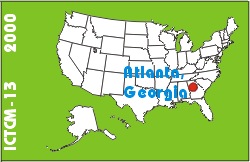
Electronic Proceedings of the Thirteenth Annual International Conference on Technology in Collegiate MathematicsAtlanta, Georgia, November 16-19, 2000Paper C025What Does the Research Say about Achievement of Students Who Use Calculator Technologies and Those Who Do Not? |
Susan BartonDepartment of Mathematics Brigham Young University-Hawaii Campus USA barton@math.byu.edu list of all papers by this author |
| Click to access this paper: |
ABSTRACT
This paper will briefly summarize the results from four previous reviews of research regarding the effect of calculator use on student achievement in mathematics from 1970 to 1995. Then a review of the research conducted on graphing technology during the 1990s will be provided. Suydam reviewed research on calculator use conducted in the 1970s. Hembree and Dessart analyzed studies comparing calculator and noncalculator groups that overlapped Suydam's review and also included research studies conducted during the early 1980s. The third review, by Smith, examined research studies reported from 1984 to 1995. Smith's critique included eight studies that implemented graphing calculators. The studies analyzed by Suydam, Hembree, and Smith included grades K - 12 in the United States. The fourth review, an analysis of US college level mathematics studies conducted from 1986 to 1995 regarding the effects of computer-enhanced instruction (including computer software and graphing calculators) on student achievement, was performed by King. Results of each of the above mentioned reviews of research that compared groups of students using calculators against groups that did not use calculators found the results from achievement measures favored the groups who used calculators.Since the late 1980s graphing calculators and other graphing utilities have become more readily available in classrooms. During the 1990s, more than 60 research studies were published on the effects of graphing calculator use in mathematics courses. This paper provides an analysis of the comparison studies reported, between 1990 and 2000, investigating the use of graphing technology and computer algebra systems (CAS) in teaching mathematical topics found in algebra, trigonometry and calculus in secondary level schools and colleges. The 52 comparison studies examined in this paper were located through on-line computer searches from national and international databases. The majority of the studies located were doctoral dissertations or master's theses. The other studies collected for review were articles published in refereed journals. Results of student overall achievement, procedural knowledge and conceptual understanding are delineated in the report.
Keyword(s): calculators, pedagogy
